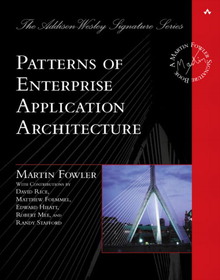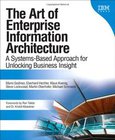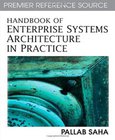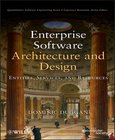Patterns of Enterprise Application Architecture

Book Details:
| Publisher: | Addison-Wesley Professional |
| Series: | Addison Wesley |
| Author: | Martin Fowler |
| Edition: | 1 |
| ISBN-10: | 0321127420 |
| ISBN-13: | 9780321127426 |
| Pages: | 560 |
| Published: | Nov 15 2002 |
| Posted: | Nov 19 2014 |
| Language: | English |
| Book format: | CHM |
| Book size: | 2.04 MB |
Book Description:
The practice of enterprise application development has benefited from the emergence of many new enabling technologies. Multi-tiered object-oriented platforms, such as Java and .NET, have become commonplace. These new tools and technologies are capable of building powerful applications, but they are not easily implemented. Common failures in enterprise applications often occur because their developers do not understand the architectural lessons that experienced object developers have learned. Patterns of Enterprise Application Architecture is written in direct response to the stiff challenges that face enterprise application developers. The author, noted object-oriented designer Martin Fowler, noticed that despite changes in technology--from Smalltalk to CORBA to Java to .NET--the same basic design ideas can be adapted and applied to solve common problems. With the help of an expert group of contributors, Martin distills over forty recurring solutions into patterns. The result is an indispensable handbook of solutions that are applicable to any enterprise application platform. This book is actually two books in one. The first section is a short tutorial on developing enterprise applications, which you can read from start to finish to understand the scope of the book's lessons. The next section, the bulk of the book, is a detailed reference to the patterns themselves. Each pattern provides usage and implementation information, as well as detailed code examples in Java or C#. The entire book is also richly illustrated with UML diagrams to further explain the concepts. Armed with this book, you will have the knowledge necessary to make important architectural decisions about building an enterprise application and the proven patterns for use when building them. The topics covered include Dividing an enterprise application into layers The major approaches to organizing business logic An in-depth treatment of mapping between objects and relational databases Using Model-View-Controller to organize a Web presentation Handling concurrency for data that spans multiple transactions Designing distributed object interfaces
Download Link:
Related Books:
The Art of Enterprise Information Architecture
A Systems-Based Approach for Unlocking Business Insight
Architecture for the Intelligent Enterprise: Powerful New Ways to Maximize the Real-time Value of Information Tomorrow's winning 'Intelligent Enterprises' will bring together far more diverse sources of data, analyze it in more powerful ways, and deliver immediate insight to decision-makers throughout the organization. Today, however, most companies fail to apply the information they already have, while struggling with the complexity and costs of their existing information environments. In this book, a team of IBM's leading information management experts guide you on a journey that will take you from where you are today toward becoming an 'Intelligent Enterprise.' Drawing on their extensive experience working with enterprise clients, the authors...
Handbook of Enterprise Systems Architecture in Practice
Enterprise architecture (EA) is the organizing logic for a firms core business processes and IT capabilities captured in a set of policies and technical choices. Handbook of Enterprise Systems Architecture in Practice provides a comprehensive and unified reference overview of practical aspects of enterprise architecture. This Premier Reference Source includes a complete analysis of EA theory, concepts, strategies, implementation challenges, and case studies. The impact of effective enterprise architecture on IT governance, IT portfolio management, IT risks, and IT outsourcing are described in this authoritative reference tool. Researchers and IT professionals will gain insights into how firms can maximize the business value of IT and increase competi...
Enterprise Software Architecture and Design
Entities, Services, and Resources
This book fills a gap between high-level overview texts that are often too general and low-level detail oriented technical handbooks that lose sight the "big picture".This book discusses SOA from the low-level perspective of middleware, various XML-based technologies, and basic service design.It also examines broader implications of SOA, particularly where it intersects with business process management and process modeling.Concrete overviews will be provided of the methodologies in those fields, so that students will have a hands-on grasp of how they may be used in the context of SOA....
2007 - 2021 © eBooks-IT.org



